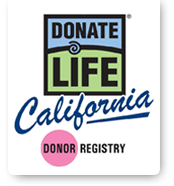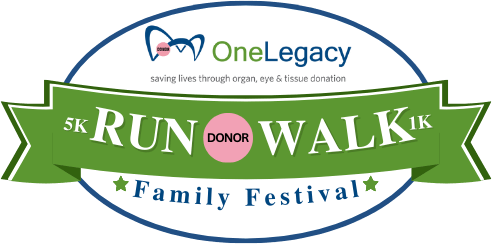OneLegacy Sets U.S. Record with 1,374 Transplanted Organs in 2013
Greater Los Angeles Non-Profit Helped to Save and Heal More Than 100,000 Lives Through Organ, Eye and Tissue Donation
LOS ANGELES, Calif., Jan. 14, 2014 – OneLegacy, the non-profit, federally designated organ, eye and tissue recovery organization serving the seven-county greater Los Angeles area, announced a new annual benchmark for U.S. organ recovery organizations with 1,374 organs recovered and transplanted and a record 2,044 eye and tissue donors in 2013.
“In 2013, donors and their families cared for by OneLegacy gave a record number of life-saving organs to patients awaiting transplants in California, throughout the nation, and even in Canada when there were no matches with U.S. patients,” announced Tom Mone, chief executive officer of OneLegacy. “This accomplishment was achieved thanks to the decisions by individuals and families to give life to others, as well as OneLegacy’s implementation of innovative donor management techniques that enabled the successful transplant of more organs from each donor to better serve transplant centers and their patients.”
Last year, OneLegacy recovered organs from a total of 422 deceased donors, the second highest in its history. The organization made enormous strides in helping each donor save as many lives as possible, reaching 3.26 organs transplanted per donor, five percent higher then the U.S. average. Mone attributed this development to the use of an intensivist consultation program that has made lungs and hearts more viable for transplant. The 172 hearts transplanted represented an increase of 38 percent after three years of virtually no gains, and the 247 lungs transplanted was up 28 percent in one year with both hearts and lungs transplant rates 40% higher than U.S. averages.
OneLegacy also set a record for the organization by recovering tissue and corneas from 2,044 donors. Patients nationwide can be thankful for tissue donors who provided skin used for abdominal repairs and burn dressings, bone to repair fractures and prevent amputation, heart valves to repair life-threatening defects, tendons to repair major knee injuries, veins for cardiac bypass surgery, and corneas to end blindness.
Driving OneLegacy’s organ recovery activity was an organ authorization rate of 71 percent, the second-highest in the organization’s history. With seven out of ten organ donation opportunities authorized either by the individual (through donor designation, primarily via the California DMV) or the donor’s family, Southland residents expressed their generosity in the most profound of ways: with a living legacy to those in need.
The most marked increase in authorization rate was among African Americans, a community with high rates of organ failure but where donation is frequently viewed with mistrust. The African American authorization rate of 75 percent is up five points since last year and 17 points (nearly 30 percent) in two years. The Caucasian population also saw a significant increase in donation rates, from 78 to 89 percent in one year.
The authorization rate among the two other major ethnic groups decreased, however. The rate among Latinos decreased from 72 to 68 percent, while the rate among Asians also decreased from a record high of 58 percent in 2012 to 48 percent last year, with both results heavily influenced by the language and cultural issues associated with recent immigration, as identified in a demographic study conducted for OneLegacy by researchers at Cal Poly Pomona and Loma Linda University.
Seeking to increase donation rates throughout the region’s large and challengingly diverse population, OneLegacy is preparing to launch a major multicultural community development initiative supported by media and led by six full-time employees. The initiative will focus on holding the exceptional gains among African Americans and Caucasians and inspiring Latino and Asian communities – especially first-generation immigrants who are less familiar with the process – to understand the value that donation provides to both recipients and donor families.
Notably, over 40 percent of organ, eye and tissue donors recovered through OneLegacy’s stewardship were authorized by the Donate Life California Registry, which counts over 10.7 million registered donors statewide.
With more than 200 hospitals, 10 transplant centers and a diverse population of nearly 20 million, OneLegacy is the largest organ, eye and tissue recovery organization in the world. For more information, call OneLegacy at (800) 786-4077 or visit www.onelegacy.org.
Those wishing to make the commitment to donate may register online at www.donateLIFEcalifornia.org or its Spanish-language counterpart, www.doneVIDAcalifornia.org.
High concentration of Azithromycin in infected tissues is also caused by the fact that phagocytes and macrophages transport it to the site of infection and release in the area of inflammation. Azithromycin is prescribed in case of illness or injury at the time.









